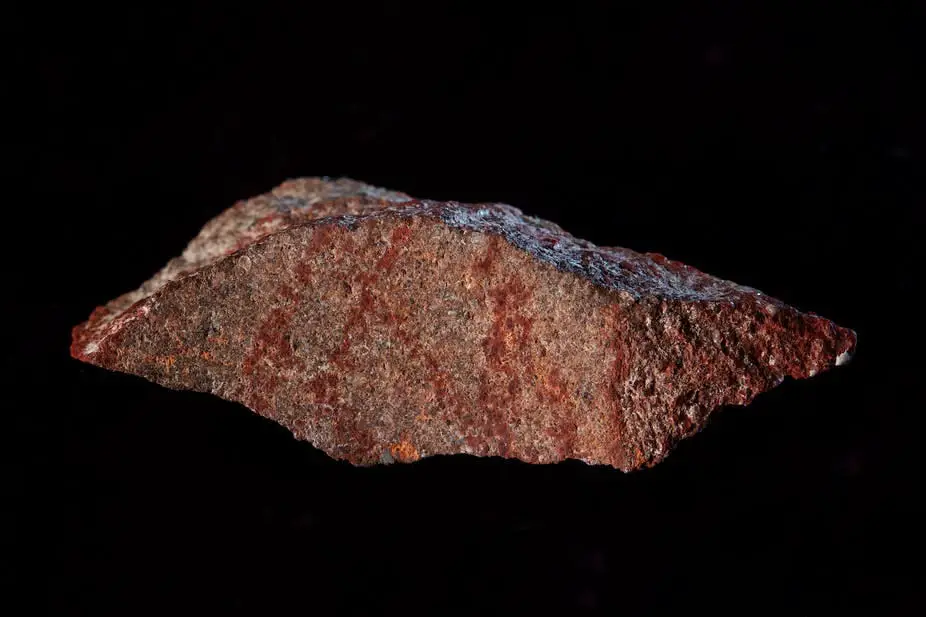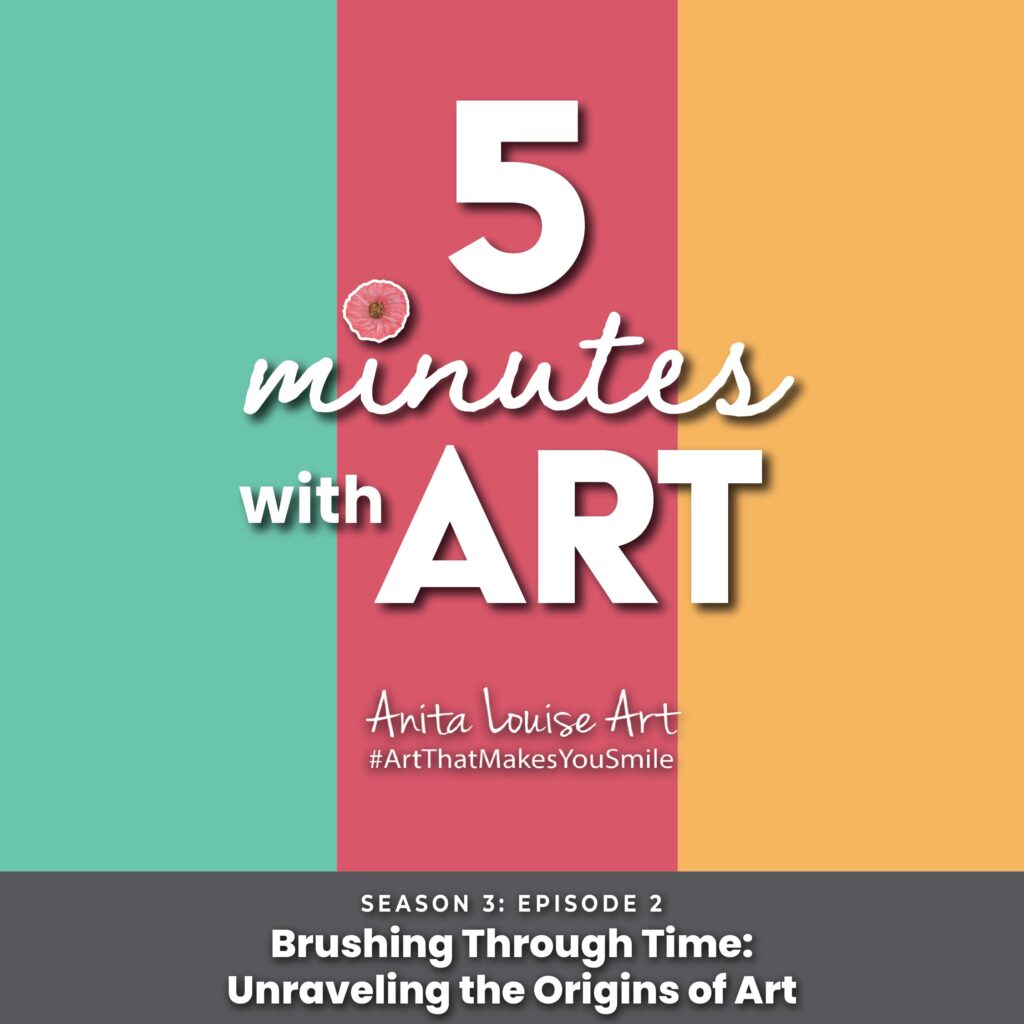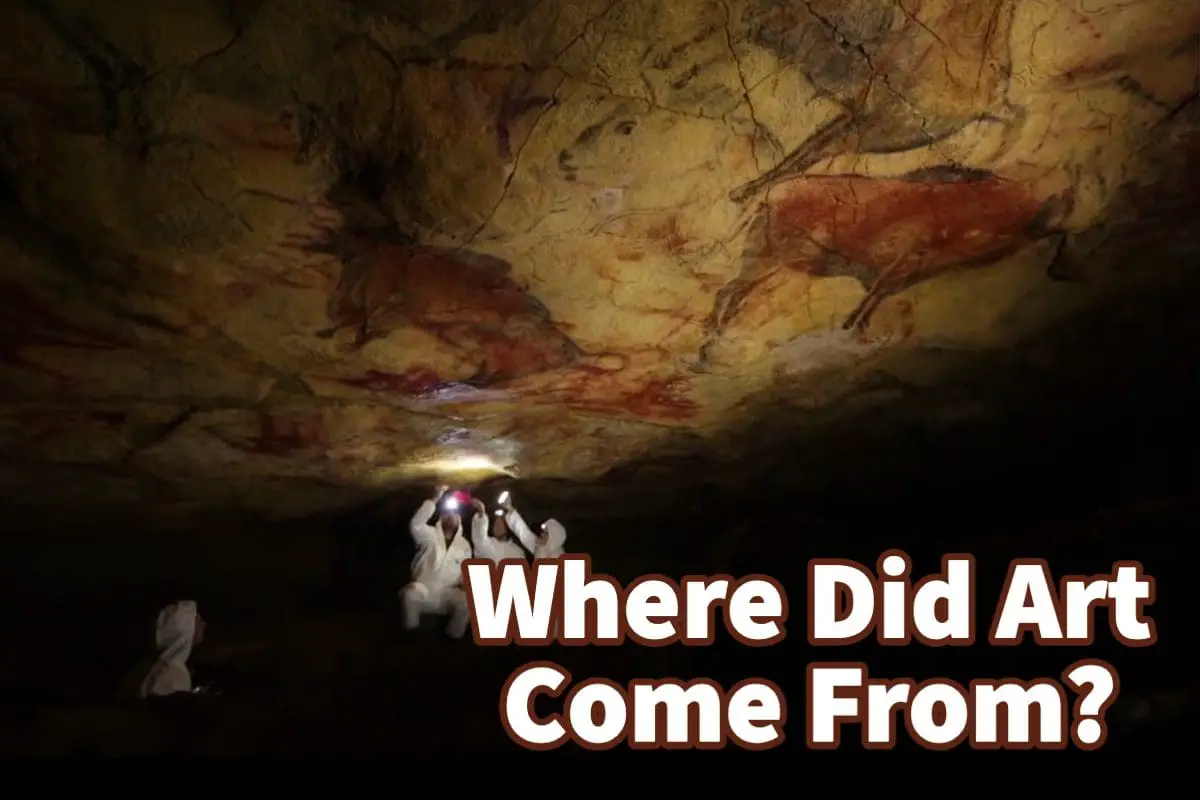The more you study art, the more you learn about yourself, cultures, and people who have gone before you. Art has been around for thousands of years.
Many historians believe art started first in Africa; many ancient forms of art have been found worldwide. Cavemen art is one of the earliest forms of art. Many cultures put art on their bodies through tattooing and other art forms. Art and our ability to understand art is what helps us to be human; art and our understanding of art and our ability to create and produce art make us different and unique from other mammals.
Table of Contents
- The Origins Of Art
- Art Makes Us Human
- Art Helps Make Us All Better Human Beings
- Frequently Asked Questions
- Related Questions
The Origins Of Art
The origins of art have to do with a legend that goes like this:
Thousands of years ago, a man drew his own shadow; he took up a burnt stick and drew around it. He started to draw stick figures in the caves. This is how art got started.
This legend refers to caveman drawings that are more than 30,000 years old. People then did not see it as art, but today we see drawing as a form of art.
Most historians agree that if art had one place for where it started, it would be in Africa; African people who lived more than 70,000 years ago have drawn art and art objects. The oldest piece of artwork has been found in the Blombos Cave.

Others say that that is not even the oldest form of art as some hand axes and other tools have been found that show an artistic nature and should also be counted as an art form. Art is one of those things that does not have a specific date or time when it started.
Since the beginning of time, human beings have had this natural creative ability.
Whether it was the caveman carving into the stones of a cave or someone wanting to sculpt or mold a lump of rock into something beautiful, we have wanted to find a way to create art since the beginning of time.
Cave Painting As An Early Art Form
Cave painting or Parietal art is found on the walls and ceilings of caves. They usually come from a historical origin, and many cave drawings are more than 44,000 years old. They are found all over the world.
Even though people did not communicate with each other during this time, early cave paintings were found from Western Europe to Indonesia.
Much of the art produced was very simple, but at the same time, these cave artists used techniques such as finger tracing, engravings, bas-relief sculptures, hand stencils, and paintings done with a few colors.
These ancient paintings show us that even the early men and women wanted to leave their mark and let us know they were there. They wanted to show us a bit about their lives through their art.
Tattoo As One Of The Early Arts
The earliest known evidence of artistic behavior is human body decoration, including skin coloring and beads. Tattooing is another ancient art form that has been used for centuries in many cultures.
Many ancient cultures have believed in tattooing as a form of body art. For example, in ancient Polynesian society, almost everyone was tattooed.
Tattooing was an Integral part of the ancient Tahitian and many other cultures. For them, tattooing was much more than a body ornament tattooing would indicate the genealogy rank, where you came from, your wealth, strength, and ability to endure things as pain.
Art Makes Us Human
When we look at all this early art, what stands out is how art makes us all human. Since the beginning of time, human beings have had a desire to create art.
Art and our ability to create and express ourselves help make us human in a way that other animals cannot. Art allows us to share our emotions, desires, fears, and dreams with others; art can make us feel like we can do anything.
As human beings, we can appreciate and view art as other mammals can not. Whether creating or viewing art, art helps make us all human.
Art makes us laugh, cry, and think, and art can connect us. It connects us to bridge the gap between cultures, languages, ages, countries, and time.
Art Helps Make Us All Better Human Beings
Art helps to make us all better human beings. Through art, we can see the differences of others and accept them for who they are. As we take a painting for what it is, we accept others for who they are.
It also helps make us better human beings by understanding more about the past through art. We can know where we came from and those who went before us.
Art can help and give us all empathy for other humans and nature. When we look at art, we can better understand our surroundings and see things differently than we have seen them. In short, art can bring color into our lives.
Listen To Our Podcast About Brushing Through Time: Unraveling the Origins of Art Below or By clicking here.

Anita Louise Art is dedicated to art education, great artists, and inspiring others to find and create their art. We love art that uplifts and inspires. #ArtToMakeYouSmile! #ArtToMakeYouHappy!
If you are interested in seeing any of my art, you can find out more by clicking here. If you are interested in what inspires me and my paintings, you can discover more by clicking here.
We have a free newsletter and would love you to be part of our community; you can subscribe to the newsletter by clicking here. If you have any questions, I would be happy to talk to you. You can reach me, Anita, by clicking here.
Subscribe to our Anita Louise Art YouTube Channel filled with great videos and information by clicking here.
Join us for our podcast “5 Minutes With Art.” Spend just 5 minutes a week with us to discover and learn about great art and artists. You can find out more about our podcast by clicking here.
Frequently Asked Questions
Where did art originate?
The origins of art can be traced back to prehistoric times, with evidence of artistic expression found in various parts of the world. Africa is often considered the birthplace of art, as many ancient forms of art have been discovered there.
How old is the earliest known art?
The earliest known art dates back tens of thousands of years. Cave paintings created by early humans in places like Lascaux in France and Altamira in Spain are estimated to be around 40,000 years old.
What were the purposes of early art?
Early art served various purposes, including religious or ritualistic practices, storytelling, documenting daily life, and expressing cultural identity.
What materials were used in early art?
Early artists utilized materials readily available to them, such as natural pigments derived from plants and minerals, charcoal, clay, and animal bones for tools.
How did art evolve over time?
Art evolved alongside human civilization, adapting to cultural, technological, and societal changes. It progressed from cave paintings to include sculpture, pottery, architecture, and eventually the vast array of art forms we have today.
What role did art play in ancient civilizations?
Art played a crucial role in ancient civilizations, serving as a means of communication, religious expression, political propaganda, and cultural preservation. It reflected the values, beliefs, and achievements of those societies.
How did art spread throughout the world?
Art spread through trade, migration, conquest, and cultural exchange between civilizations. As different societies interacted, artistic techniques, styles, and motifs were shared and influenced one another.
What were some notable ancient art forms?
Notable ancient art forms include the monumental architecture of the Egyptians, the intricate pottery of the Greeks, the magnificent sculptures of the Romans, and the richly detailed murals of the Maya.
Related Questions
How Does Art Benefit Human Society?
There are many ways that art can help to benefit human society. Art can help your cognitive ability and your brain. Throughout the ages, art has helped change opinions and perspectives. Art also helps us understand more about history and what it was like to live in times past.
By clicking here, you can learn more by reading How Does Art Benefit Human Society?.
Art and History – Understanding Our Past
When we study art, it helps us understand and gives us clues to the past. As we see what the artist has painted, we can piece together what life was like during that time in history. Art also helps us better understand the cultures and people who once lived and their life.
You can discover more by reading Art and History – Understanding Our Past by clicking here.


